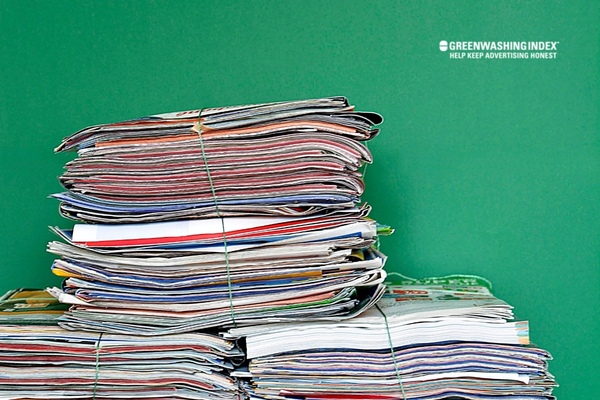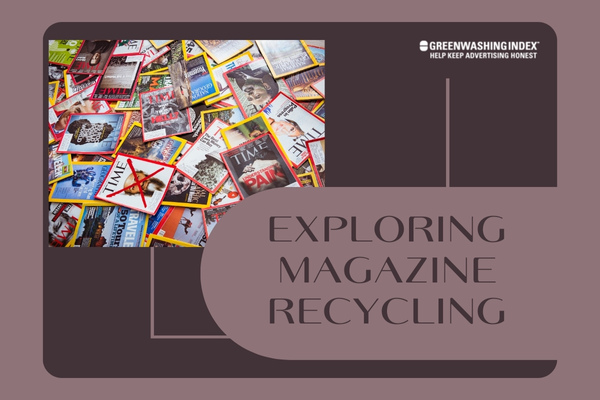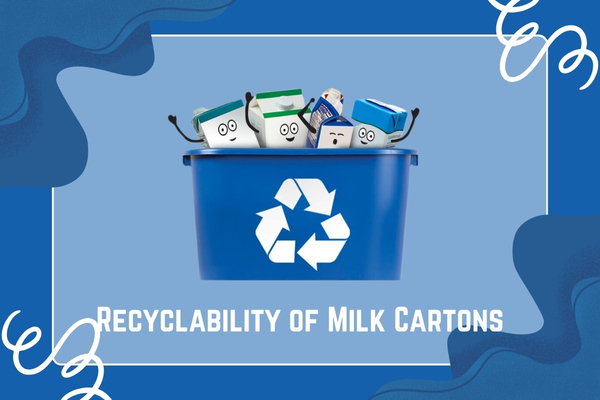Let’s embark on an illuminating exploration of the underappreciated realm of magazine recycling. Amid a climate crisis where every little effort counts, our seemingly insignificant choice to recycle or not can indeed make or break our earth’s future. While we might not give a second thought to the stack of magazines piling up in our living rooms, think again.
Could these glossy pages be more than just last month’s news? Can they serve a purpose beyond their initial reads and contribute positively towards sustainability?
Magazines serve as valuable sources of knowledge and entertainment for many; however, their life do not need to end when their content becomes outdated. By participating in magazine recycling, you allow these spent materials to reclaim life anew!
You’d be surprised how an old issue of Vogue could transform into something altogether different but equally useful – perhaps paper towels for your kitchen or packaging for an Amazon order.
In this read, you’ll reap:
- Insights about the importance and process of magazine recycling
- Understanding about sustainable reading materials
- Ways to initiate personal magazine recycling efforts
- Strategies to overcome challenges in paper quality and collection hindrances
- Inspiring success stories from global communities excelling in print media sustainability
Understanding Magazine Recycling
Magazine recycling, while seemingly straightforward, is a process that involves various steps and plays a significant role in driving sustainability. Let’s dive into the dynamics of magazine recycling and understand its importance in today’s world.
Magazine recycling is a fascinating process, one that takes us full circle in the lifecycle of print media.
- It all starts with us dropping off our read-and-enjoyed magazines at local recycling centers.
- From there, these old issues are collected and transported to a recycling facility, where they begin their transformative journey.
- Via machines, the magazines are separated and shredded into tiny pieces, forming what is known as pulp.
- This pulp undergoes thorough cleaning to remove any remaining ink and unwanted particles like staples.
- Once clean, the pulp gets heated until it reaches a semi-liquid state.
- The semi-liquid mixture then gets spread on screens, allowing the water to drain out and form sheets of paper.
Be it crafting eco-friendly publications or your everyday office papers, this is essentially how magazine recycling works!
The Importance of Recycling Magazines
Recycling paper products as common as magazines holds far more significance than one would imagine:
- Conserve Natural Resources: Every ton of recycled magazine paper saves approximately 17 trees, along with several gallons of water needed for processing raw material.
- Reduces Greenhouse Gas Emissions: Methane is a potent greenhouse gas released when paper decomposes in landfills. By recycling, we can reduce this emission significantly.
- Support Sustainable Reading Materials: In an era striving for sustainability, why should reading habits be left behind? Recycled magazines have smaller carbon footprints compared to their non-recycled counterparts.
Thus, in today’s world, where severe climate changes are causing global concerns, I find it increasingly important that we take steps like magazine recycling towards making the earth more sustainable and healthier for future generations.
The Sustainability Factor in Magazine Recycling
The journey to an eco-friendly existence begins with the understanding that sustainability is a vital element of our lifestyle. Two crucial aspects of this involve minimizing our negative impact on the environment and transforming our waste into something productive. This profound realization brings us to explore a concept that stands at this intersection – Magazine recycling.

Environmental Impact of Magazine Production
Let’s dive now into the environmental footprint left by producing and discarding magazines in a non-sustainable way. The production process for one magazine alone isn’t trivial. It necessitates energy, water, and other resources, which all contribute to its environmental footprint.
- Deforestation: Every fresh batch of magazines printed requires pulp from trees—lots of them! Therefore, producing large numbers of print editions contributes significantly to deforestation. As we know, losing trees at a daunting rate disrupts biodiversity and impacts climate change negatively.
- Energy Consumption: From logging operations for procuring raw materials to manufacturing processes for turning wood into glossy paper—each step consumes significant quantities of energy.
- Water Usage: Paper production is notoriously known for its high water consumption. It directly impacts available freshwater reserves.
- Pollution & Greenhouse Gas Emissions: Both production & disposal processes generate substantial waste, leading to pollution and greenhouse gases.
With all these impacts clearly outlined, perhaps it’s time we consider magazine recycling as more than an afterthought but as a central pivot around which our reading habits revolve.
The Eco-Friendly Benefits of Magazine Recycling
Now let’s unveil the benefits you may not have known about magazine recycling:
- Resource Conservation: Even though recycling also uses energy, it considerably saves natural resources (like trees) – fewer magazines made from new paper means fewer trees are cut down.
- Reduced Pollution: Any paper product shipped off to a recycling plant instead creates less waste pollution that would otherwise go straight into landfills.
- Energy Saver: It’s interesting to know that producing fresh paper from recycled materials consumes less energy than creating paper from tree pulp.
- Employment Opportunities: Did you know recycling initiatives provide jobs at collection centers and recycling plants, thereby stimulating the economy?
Incorporating magazine recycling into our routine contributes to a more sustainable world by reducing waste, conserving natural resources, and saving energy. By understanding the real impact of our consumption choices on the environment and actively deciding to participate in solutions like Magazine Recycling, we are making a powerful statement about the kind of world we want to live in.
How You Can Start Your Own Magazine Recycling Initiative?
In the journey to sustainable living, magazine recycling is a step forward. With commitment and some prep work, you can lead your own initiative – either by finding local collection centers or by starting one where you live or work. That’s not all. It’s equally important to know which type of magazines is recyclable.

Finding Collection Centers
Before diving into how you can get started, don’t forget that recycling starts when there’s something to recycle! One might wonder what to do with piles of old magazines cluttering up the house or workplace. Here’s an idea – scouting for local collection centers.
- Research About Collection Centers: The first step requires exploring my neighborhood or city for existing magazine collection centers. These places take care of paper waste reduction and make sure the collected magazines are sent off for recycling.
- Schools and Libraries: Often, schools and libraries have programs focused on sustainability in print media where they gather old magazines.
- Online Platforms: Websites like Earth911 provide comprehensive databases to quickly find a suitable magazine recycling center near me based on my location.
- Starting My Own Mini Center: This could be at home or in the office, intending to promote responsible disposal of reading material—bringing like-minded individuals together while accentuating eco-friendly publications in our small community.
Understanding What Magazines Can Be Recycled?
Next up is understanding which types of magazines are indeed recyclable. It may come as a surprise, but not all kinds can go directly into the recycle bin!
- Glossy Magazines: Contrary to popular belief, glossy materials from magazines aren’t non-recyclable; modern recycling processes accept them with open arms.
- Plain Paper Magazines: As expected, these plain paper ones are 100% recyclable.
- Mixed Material Magazines: This is where things get complicated. Magazines that include elements like hard plastic binding or, heaven forbid, glitter are not readily recyclable.
Regardless of their type, please make sure the magazines are clean and dry before you recycle them. Remember, magazine recycling is all about adapting to a culture of sustainability! So, let’s hop on this bandwagon for a greener future.
Challenges in Magazine Recycling
Despite its numerous benefits and the urging need for sustainability, magazine recycling is not without its fair share of challenges. As I grappled with this concept, I continually found two issues that seemed to create substantial hindrances – the quality of paper and the issues surrounding collection & segregation. Let me delve further into each aspect below.
Overcoming Obstacles in Paper Quality
The first major obstacle to magazine recycling lies in the quality and composition of the paper itself. Most magazines are rife with high ink content and sport a glossy finish – factors that pose a considerable challenge during recycling. Here’s why:
- High Ink Content: We all appreciate vibrant, colorful images in magazines, but it’s this very high concentration of ink that creates a significant problem when it comes to recycling. The ink doesn’t completely break down during the deinking process, reducing both the quality and yield of recycled pulp.
- Glossy Finish: Magazines often have a shiny finish due to coatings like kaolin clay or calcium carbonate applied for better print quality. These intrinsic features make it harder for many recyclers who are ill-equipped to deal with these materials.
Overcoming these challenges might call for technological adaptations or preferring eco-friendly publications with less glossy finishes and minimalistic design strategies where possible.
Addressing Collection & Segregation Hindrances
A second formidable barrier is associated with collecting and segregating magazines from other paper waste generated from varied sources like households or offices. Let’s walk through them:
- Inconsistent Collection Efforts – A vast chunk of recyclable materials, including magazines, often end up mixed up with general waste due to lackadaisical approaches towards structured collection systems across cities.
- Segregation Hassles – Even if collected diligently, many reprocessing centers struggle to efficiently segregate mixed waste into categories suitable for recycling which leads to improper utilization of resources.
Addressing these hitches requires a significant effort in public education about segregation at source, while authorities should strive towards more efficient collection systems.
Navigating through the challenges of magazine recycling is primarily about tackling these issues related to paper quality and systematic waste collection & segregation. However, addressing these hurdles head-on can potentially pave the way towards transforming it into an eco-friendly reading habit that aligns with our sustainability goals.
After all, the path to paper waste reduction might be riddled with obstacles, but as they say – where there’s a will, there’s a way!
Engaging Communities In Magazine Recycling Efforts
Getting people involved in magazine recycling efforts plays a crucial role in achieving sustainability. It’s all about creating a culture of responsibility towards our environment. This not only helps to manage waste from used magazines but also promotes the adoption of eco-friendly habits. Let’s dive into some inspiring success stories from across the globe.

Successful Stories From Around The World
The culture of magazine recycling is going global, with numerous communities embracing sustainable reading materials and effectively carrying out magazine recycling efforts. Here are a few that caught my attention:
- The Gothenburg Initiative, Sweden: This community initiative sparked interest in Sweden’s second-largest city, Gothenburg. To encourage sustainability in print media and reduce paper waste, they set up several designated points for magazine collection in public spaces such as libraries and supermarkets.
- Recyclebank, United States: A U.S.-based incentives program called Recyclebank motivates citizens to recycle through awarding points that people can use for discounts at local businesses. Members accumulate points based on their recycling habits including turning in old magazines.
- Japan’s Paper Recycling Culture: Japan is known for its stringent waste management practices and has been at the forefront of paper products recycling, including magazines.
- Recycling Revolution in Brazil – Brazil has one of the most successful recyclers’ cooperative movements globally. Hundreds of groups have established their collection centers promoted by comprehensive education about the importance and process of magazine recycling.
These inspiring examples underscore how strategic actions tailored to each community can stimulate active participation in magazine recycling programs.
It may seem that individual actions like this don’t make much difference considering the volume of global paper waste but remember: It all adds up! Each one has a part to play in supporting days without landfills filled with discarded reading material; tomorrow where our favorite journals turn into new products rather than environmental liabilities!
I believe we could all play our part in contributing to this sustainable exploration of magazine recycling and paper waste reduction. Let’s recycle, reuse, reduce, and keep our planet green!
FAQs
Is it possible to recycle all types of magazines?
Yes, it’s possible to recycle most types of magazines. However, the process might vary depending on the magazine’s paper quality such as high gloss or ink content.
What happens to recycled magazines?
Recycled magazines undergo a process in which they’re broken down into pulp through de-inking and pulping. The pulp is then used to produce new paper products, reducing waste and the need for raw materials.
Why should businesses consider magazine recycling?
Businesses should consider magazine recycling as an essential element in their sustainability strategies. It reduces waste sent to landfills, conserves resources, minimizes pollution, and supports circular economy efforts.
Conclusion
In my journey exploring magazine recycling, I’ve seen how sustainability in print media is more than just a flashy trend. It’s an environment-friendly necessity. Recycling paper products reduces our carbon footprint and significantly decreases paper waste.
Magazine recycling not only conserves resources but also lessens pollution, uplifting the eco-health of our planet. Yet, it’s not without its challenges – high ink content and ensuring proper segregation require strategic planning and commitment.
Nevertheless, the success stories from across the globe affirm that these hurdles can be conquered with community involvement, making magazine recycling a practical reality.



